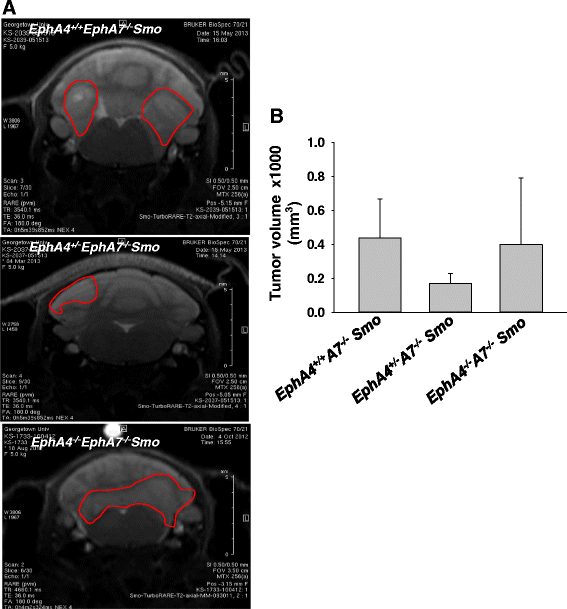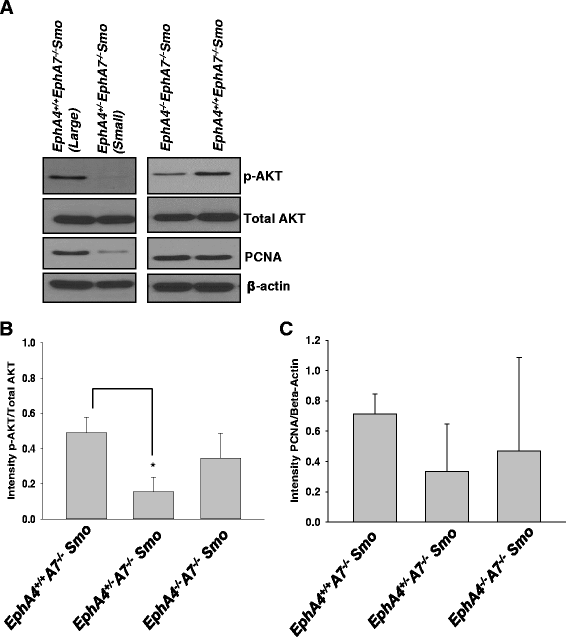Effects of altered ephrin-A5 and EphA4/EphA7 expression on tumor growth in a medulloblastoma mouse model
- PMID: 26345456
- PMCID: PMC4561476
- DOI: 10.1186/s13045-015-0202-9
Effects of altered ephrin-A5 and EphA4/EphA7 expression on tumor growth in a medulloblastoma mouse model
Abstract
Background: Members of the Eph/ephrin gene families act as key regulators of cerebellar development during embryogenesis. Aberrant signaling of Eph family of receptor tyrosine kinases and their ephrin ligands has also been implicated in human cancers. Medulloblastoma is an aggressive primitive neuroectodermal tumor that originates from granule neuron precursors in the cerebellum. Previous studies have suggested a role for the ephrin-A5 ligand and its receptors, EphA4 and EphA7, in granule cell-precursor formation and in guiding cell migration. In the present study, we investigated the effects of genetic loss of ephrin-A5, EphA4, and EphA7 on the spatiotemporal development of medulloblastoma tumors in the context of the smoothened transgenic mouse model system.
Findings: Radiographic magnetic resonance imaging (MRI) was performed to monitor tumor growth in a genetically engineered mouse model of medulloblastoma. Tumor tissue was harvested to determine changes in the expression of phosphorylated Akt by Western blotting. This helped to establish a correlation between genotype and/or tumor size and survival. Our in vivo data establish that in ND2-SmoA1 transgenic mice, the homozygous deletion of ephrin-A5 resulted in a consistent pattern of tumor growth inhibition compared to their ephrin-A5 wild-type littermate controls, while the loss of EphA4/EphA7 failed to produce consistent effects versus EphA4/EphA7 wild-type mice. A positive correlation was evident between tumor size, p-Akt, and proliferating cell nuclear antigen (PCNA) expression in our transgenic mouse model system, regardless of genotype.
Conclusions: Taken together, our findings underscore the importance of targeting specific members of the Eph/ephrin families in conjunction with the Akt pathway in order to inhibit medulloblastoma tumor growth and progression.
Figures




References
Publication types
MeSH terms
Substances
Grants and funding
LinkOut - more resources
Full Text Sources
Other Literature Sources
Molecular Biology Databases
Miscellaneous

